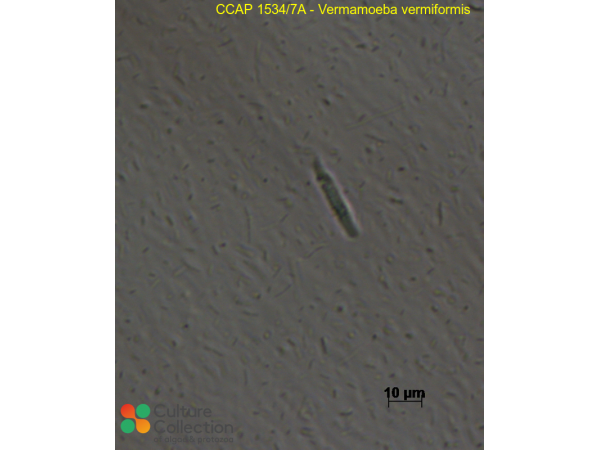References [ 5 ]
Pickup ZL, Pickup R & Parry JD (2007) Effects of bacterial prey species and their concentration on growth of the amoebae Acanthamoeba castellanii and Hartmannella vermiformis. Applied and Environmental Microbiology 73(8): 2631-2634.
Axelsson-Olsson D, Olofsson J, Svensson L, Griekspoor P, Waldenström J, Ellström P & Olsen B (2010) Amoebae and algae can prolong the survival of Campylobacter species in co-culture. Experimental Parasitology 126: 59-64.
Dupuy M, Berne F, Herbelin P, Binet M, Berthelot N, Rodier MH, Soreau S & Hechard Y (2013) Sensitivity of free-living amoeba trophozoites and cysts to water disinfectants. International Journal of Hygiene and Environmental Health 335: 339.
Cervero-Arago S, Rodriguez-Martinez S, Canals O, Salvado H & Araujo RM (2014) Effect of thermal treatment on free-living amoeba inactivation. Journal of Applied Microbiology 116: 728-736.
Cervero-Aragó S, Sommer R & Araujo RM (2014) Effect of UV irradiation (253.7 nm) on free Legionella and Legionella associated with its amoebae hosts. Water Research 67: 299-309.
Division/Phylum: Amoebozoa Class: Tubulinea
Note: for strains where we have DNA barcodes we can be reasonably confident of identity, however for those not yet sequenced we rely on morphology
and the original identification, usually made by the depositor. Although CCAP makes every effort to ensure the correct taxonomic identity of strains, we cannot guarantee
that a strain is correctly identified at the species, genus or class levels. On this basis users are responsible for confirming the identity of the strain(s) they receive
from us on arrival before starting experiments.
For strain taxonomy we generally use AlgaeBase for algae and
Adl et al. (2019) for protists.
| Attributes |
| Authority | (Page) Cavalier-Smith & Smirnov 2011 |
| Isolator | Page (1964) |
| Collection Site | Pigeon Lake, Wisconsin, USA |
| Notes |
Isolation: plating; clonal; Cystforming. |
| Axenicity Status |
Monoxenic |
| Area |
North America |
| Country |
USA |
| Environment |
Freshwater |
| GMO |
No |
| Group |
Protozoa |
| In Scope of Nagoya Protocol |
No |
| ABS Note |
Collected pre Nagoya Protocol. No known Nagoya Protocol restrictions for this strain. |
| Collection Date |
c 1964 |
| Original Designation |
25 |
| Pathogen |
Not pathogenic: Hazard Class 1 |
| Strain Maintenance Sheet |
|
| Toxin Producer |
Not Toxic / No Data |
| Type Culture |
Yes |
| Taxonomy WoRMS ID |
|
| Formerly Listed in CCAP as | Hartmannella vermiformis Page 1967 |

